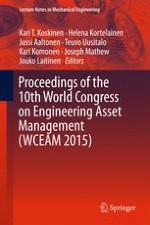2016 | OriginalPaper | Buchkapitel
Mapping Time-Variant Modelling of Tool Wears and Cutting Parameters on Difficult-to-Machine Materials
verfasst von : Peipei Zhang, Yan Guo
Erschienen in: Proceedings of the 10th World Congress on Engineering Asset Management (WCEAM 2015)
Aktivieren Sie unsere intelligente Suche, um passende Fachinhalte oder Patente zu finden.
Wählen Sie Textabschnitte aus um mit Künstlicher Intelligenz passenden Patente zu finden. powered by
Markieren Sie Textabschnitte, um KI-gestützt weitere passende Inhalte zu finden. powered by
